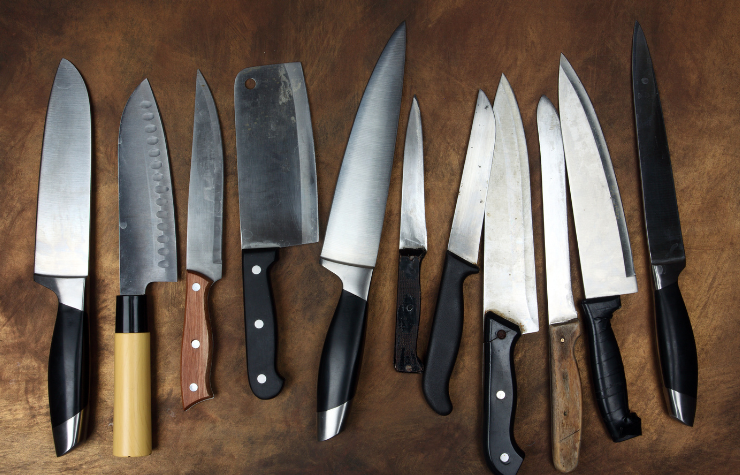Japanese and Western knives, each with their distinct traits and traditions, serve as remarkable instruments in the culinary sphere. While both are crafted for the kitchen, understanding their differences and ideal applications can greatly enhance a cook’s efficiency and the outcome of their culinary creations. Here’s a guide to using Japanese and Western knives to their fullest potential.
Understanding the Basics:
Blade Material:
Japanese knives often feature high-carbon steel, known for its sharpness and edge retention, while Western knives typically use stainless steel, appreciated for its durability and corrosion resistance.
Edge Angle:
Japanese knives have a finer edge, usually sharpened to 15-16 degrees, enabling precise, clean cuts. Western knives have a more robust edge, sharpened to 20-22 degrees, suitable for heavier tasks.
Blade Shape:
Japanese knives have a variety of blade shapes designed for specific tasks, while Western knives often have more versatile designs, like the chef’s knife, meant for a range of cutting tasks.
Utilizing Japanese Knives:
Precision Tasks:
Use Japanese knives for tasks requiring precision and finesse, like slicing sashimi, chopping vegetables, or carving meat.
Single Stroke Cuts:
Employ a single stroke, either a push or pull cut, to make the most of the sharp edge and to prevent crushing or bruising the food.
Use the Right Knife for the Right Job:
Select the appropriate Japanese knife for the task at hand, like using a Deba for filleting fish or a Nakiri for chopping vegetables.
Utilizing Western Knives:
Heavier Duty Tasks:
Employ Western knives for heavier duty tasks like cutting through tough root vegetables, bones, or frozen foods.
Rocking Motion:
Utilize the curved blade of Western chef’s knives to employ a rocking motion for mincing herbs and garlic, making the task efficient and easy.
Versatile Applications:
A Western chef’s knife is highly versatile and can handle a variety of cutting tasks, making it a go-to knife in many kitchens.
Maintenance:
Sharpening:
Regularly hone and sharpen your knives to keep them in top condition. Japanese knives benefit from a whetstone, while Western knives can be honed with a rod and sharpened on a stone or sometimes with a honing machine.
Safe Handling:
Grip:
Ensure a secure grip on the handle, keeping fingers tucked away from the blade.
Cutting Surface:
Always cut on a stable, soft surface like a wooden or plastic cutting board to prevent accidents and protect the blade’s edge.
Consider seeking professional advice or training on handling these knives, especially if you’re transitioning from one style to the other, to ensure safe and effective use.
In summary, appreciating the nuanced differences between Japanese and Western knives, and applying them in suitable scenarios, will significantly uplift your culinary prowess, ensuring every cut is a step towards a masterpiece.
